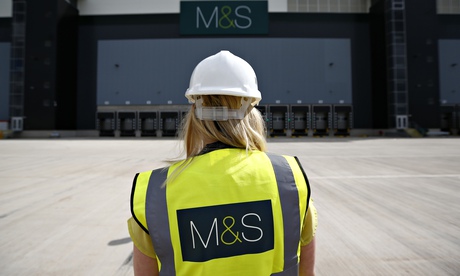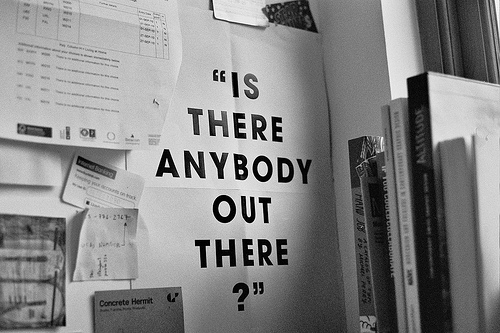
If you've read many of my previous posts you'll know of my views about the role and value of social media - its effectiveness as an exercise in relationship building and therefore its value as a one-to-one relationship marketing tool (which you'll find emphasised in my book The 10 Principles of Open Business).
Its job is to create advocates. But what does advocacy mean on the spreadsheet?
To make such a calculation you need five things:
- A clear and measurable definition of advocacy
- A behaviour change which can reasonably be defined as identifying a shift from standard customer to advocate.
- A cash value which can be reasonably attributed to that behaviour change
- A robust 'number of friends' each of us could influence.
- A mathematically robust formulation of transmission of positive influence in networks.
Let's tackle the difficult one first. Number 5. How do we calculate pass-on in networks. Well, it happens that there are some very clever people with massive brains and even larger computers who have been working on this exact problem for many years. And they've come up with their 42 (look up Hitchhiker's Guide to the Galaxy if that's confused you).
Dr Martin Nowak - himself a professor of maths, biology and evolutionary science at Harvard - quotes a very useful ratio (in his book Super-Cooperators) discovered by Nicholas Christakis of Harvard Medical School and James Fowler of the University of California, San Diego. It suggests we are swayed by the good mood of not only friends, but of those indirectly related - through second and third degree iterations.
In the first generation the chance of them displaying a positive response is 34% . In the second (friends of friends) it is 10%. And in the third (friends of friends of friends) it is 6%.
It turns out this is a function of the structure of human social networks - not of the nodes within them... And it dries right up after the third iteration. This seems to me a very reasonable proxy for advocacy. You have to be happy with what you've been provided with in order to advocate it to your friends. Very happy.
This is very useful indeed.
It means that if we know the value of the behaviour change (X) and the number of friends (Y) we can use the transmission formula to understand the network effect - in real cash terms - of creating one advocate. We can put a price on the value of over-delivery - of creating happiness...
Here's the formula:
Pass on to friends (F) = Y * .34 * X
Pass on to friends of friends (FF) = Y * .1 * X
Pass on to friends of friends of friends (FFF) = Y * .06 * X
Add them together (F+FF+FFF) = Value of advocacy in a network.
Still with me?
Now we have to start reducing the number of variables. The most important is the value of Y: number of friends.
Again, we are indebted to the canon on peer-to-peer relationships. The number of friends who could typically be called 'close tie' at each iteration is just six. It's the typical number of people you text, for example; Facebook offers you 'six friends' when looking at someone's profile - based on close ties; in Britain
only six friends will last your whole life through. Philosopher's of friendship think you can only maintain 6-12 friends at a time.
Six may sound low when you look at the number of twitter followers and facebook friends you have - but it turns out about right if you take a closer look at the number of people you maintain daily contact with. Remember - we aren't trying to make a case for reach here but for the ability to create behavioural change through advocacy.
Let's bring this to life with an example.
Let's say we can track the value of a group of customers. Let's call them group A.
On average they spend £300 with us. But we take a subset of these, group B, and provide them with exceptional customer service.
We find that group B end up spending £100 more on an average transaction with us than with their peers in group A.
The additional spend is the behaviour change we have identified as a marker of someone who is happy enough with us to advocate us to their peers.
This £100 then is the financial representation of a behaviour change which illustrates someone has changed status from customer to advocate.
Just to be clear, it doesn't matter how many times this person spends more money with us - that isn't their advocacy value, that's repeat business. In other words another impact of treating a customer well may be a rise in that customer's lifetime value, but that's not what we are calculating here; that increase in total spend will be recorded directly in your sales figures.
What we are seeking here is the impact of that person's "happiness with us" on others - their close tie friends, their friends of friends, and their friends of friends of friends.
Ok - so - if you will indulge me - we have numbers 5-2 on my list covered. How will we define advocacy in a way it can be identified and measured?
Advocacy is the act of publishing (posting/tweeting) about a positive customer experience.
Those of you thinking a few steps ahead will already have noted that the formula for calculating the amplifying effect of advocacy in networks must be a consistent number.
We'll work through a simple example taking our formula and using real numbers (in which £100 uplift in spend is the value ascribed to the behaviour change which indicates shift from customer to advocate) to illustrate why:
Here's the formula:
Pass on to friends (F) = (6) * .34 * £100 = 204
Pass on to friends of friends (FF) = (6*6) * .1 * £100 = 360
Pass on to friends of friends of friends (FFF) = (6*6*6) * .06 * £100 = £1296
Add them together (F+FF+FFF) = £1860.
And if we divide by the base behaviour change figure (£100) we end up with 18.6.
So - if you know the value you can ascribe to a behaviour change which indicates a shift from customer to advocate (such as an increase in the amount they are spending with you) you can simply multiply by 18.6 to give you the advocacy value of an advocate.
Calculate the number of instances (as defined by someone publishing their positive experience) and you are able to put a very reasonable number on the value of inspiring advocacy. In my view at least.
I'd be interested in your views on the methodology I've used.
I believe I have erred on the side of conservative assumptions. But they seem reasonable. If I rave to six of my friends about a great customer experience I had with X, the assumption is that the next time (at any time in the next five years) these guys have an option on which brand to choose a third will recall my positivity about X and give it a try... and so on to 2nd and 3rd generation ties.
This is less that perfect I'll grant, but for every challenge that can lower the output (will a third of your peers buy or just think nice thoughts?), there's another to consider to raise it (is six really a big enough number of friends to consider at each iteration?, what about all the advocacy that happens face to face but not online).
My response is this is the best I've got to so far, it ploughs a reasonable and conservative middle course, and it is based on the summation of much of the best of thinking, theory and testing in network science.
Using it allows me to set realistic and accountable KPIs and steer social media and social content strategy in the right direction.

 Communication. The act of communion with another soul. Isn't it?
Communication. The act of communion with another soul. Isn't it?
 If you've read many of my previous posts you'll know of my views about the role and value of social media - its effectiveness as an exercise in relationship building and therefore its value as a one-to-one relationship marketing tool (which you'll find emphasised in my book The 10 Principles of Open Business).
If you've read many of my previous posts you'll know of my views about the role and value of social media - its effectiveness as an exercise in relationship building and therefore its value as a one-to-one relationship marketing tool (which you'll find emphasised in my book The 10 Principles of Open Business).


 I watched a young band play in a pub garden recently. As they went through their covers routine it struck me that when I had been playing in bands at that age(ish) I'd gone straight past the covers phase, direct to playing my own material.
I watched a young band play in a pub garden recently. As they went through their covers routine it struck me that when I had been playing in bands at that age(ish) I'd gone straight past the covers phase, direct to playing my own material. For example, a work colleague may ask me what I thought of the film I saw last night. And if I think it was just 'meh' I'll say so. But if I thought it really sucks or is really brilliant I may have already tweeted about it. In short we digitally report what we think will be useful to our peers.
For example, a work colleague may ask me what I thought of the film I saw last night. And if I think it was just 'meh' I'll say so. But if I thought it really sucks or is really brilliant I may have already tweeted about it. In short we digitally report what we think will be useful to our peers. I'll be discussing Open Business (and of course The 10 Principles of Open Business) on Ann Hawkins' Business Hub show on Star Radio this Sunday morning (April 27, 2014) 9am-10am.
I'll be discussing Open Business (and of course The 10 Principles of Open Business) on Ann Hawkins' Business Hub show on Star Radio this Sunday morning (April 27, 2014) 9am-10am. There's more to transparency than simply telling the truth.
There's more to transparency than simply telling the truth. There is a sense of dishonesty rather than truth in how this is presented to us. It feels like we are being deliberately given parts of the story when that part is to the benefit of one party (the brand) rather than the mutual benefit of both.
There is a sense of dishonesty rather than truth in how this is presented to us. It feels like we are being deliberately given parts of the story when that part is to the benefit of one party (the brand) rather than the mutual benefit of both.



 The likes of Kred and Klout seem to me built for marketing (of self and of brands). And in any event they only tell me what my value is at a very general level - a level which is of little value to companies (or ourselves).
The likes of Kred and Klout seem to me built for marketing (of self and of brands). And in any event they only tell me what my value is at a very general level - a level which is of little value to companies (or ourselves). I found myself picking up Paul Greenberg's CRM At The Speed of Light last week - just the five-plus years after the fourth and final edition came out.
I found myself picking up Paul Greenberg's CRM At The Speed of Light last week - just the five-plus years after the fourth and final edition came out.
